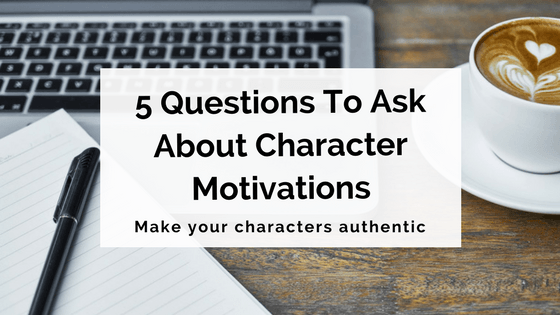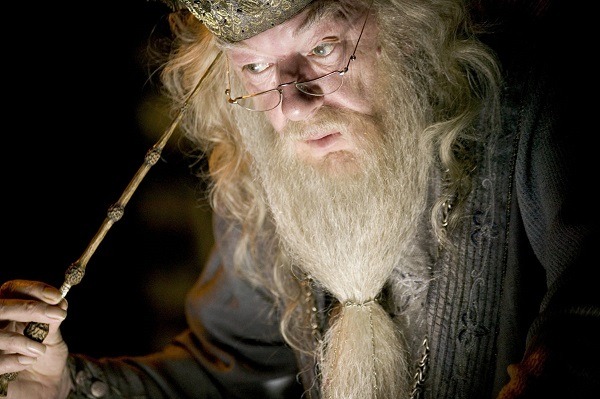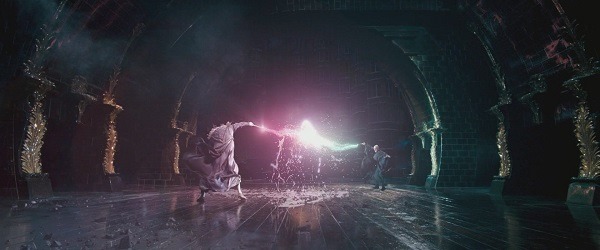Creating compelling characters is perhaps the most important aspect of fiction writing. Previously, we’ve explored the processes of crafting believable characters, writing strong character relationships, and making your characters more memorable. But what about your characters’ motivations?
The decisions and actions of characters drive the plot of every story. And each of your story’s players – whether hero, villain, or supporting character – should have reasons for making those choices, and for carrying out those actions.
Clear, strong, and realistic motivations are essential for every round character in every story. But why exactly are these motivations so important?

Put simply, if you don’t establish your characters’ motivations, you run the risk of writing characters who fall flat. Characters who readers just can’t understand or connect with; characters who exist only to further the story; characters who are inconsistent, or who perpetuate lazy tropes and stereotypes.
Obviously, none of these types of characters are ones you want in your story! So it’s absolutely vital that you fully understand your characters’ motivations – and that your readers do, too.
Here are five key questions to ask yourself when establishing your characters’ motivations.
1. Are your characters’ motivations internal or external?
There are two key types of motivations your characters might experience: internal and external. (Bear in mind that they may experience both at the same time – more on that below.)
Internal motivations are those that come from within the character. The character is motivated to act by a choice they have made within themselves – a personal goal, perhaps, or a desire to achieve some outcome or reward.
External motivations are outside factors that motivate the character to act. Other characters, or situations outside the character’s control, may influence or even force them to make certain decisions and actions.
Often, a combination of both these types of motivations makes for interesting storytelling – especially if the two happen to be conflicting.

Let’s consider an example from an old favourite, the Harry Potter series. The character of Albus Dumbledore is a great exhibitor of both internal and external motivations, and a great example of how such motivations can also be conflicting.
The majority of Dumbledore’s decisions and actions are motivated by a desire to see the series’ antagonist, Voldemort, defeated. These are primarily external motivations, and they lead Dumbledore to formulate a plan using Harry Potter himself to defeat Voldemort – even though this means that Harry’s life will eventually be sacrificed.
However, Dumbledore also experiences a conflicting internal motivation: the desire to protect Harry, to see him lead a safe and happy life. This motivation leads Dumbledore to keep the details of the plan from Harry, and to delay the plan’s consequences until the last possible moment. As Dumbledore himself puts it…
I cared more for your happiness than your knowing the truth, more for your peace of mind than my plan, more for your life than the lives that might be lost if the plan failed.”
Now, not all of your characters’ motivations need to be this complex or conflicting. But it’s important to consider whether their motivations are internal, external, or both, and how these differing sets of motivations will affect your characters’ actions and the outcomes of the story.

2. Are your characters’ motivations realistic and believable?
How many times have you come across a villainous character who’s evil simply for the sake of being evil? Or a hero whose every action is completely altruistic and selfless?
These kinds of characters tend to fall rather flat – all because their motivations are unrealistic.
Very few real people do terrible things simply for the sake of it, and even fewer act selflessly 100% of the time. If you want your characters to read like living, breathing people, their motivations are going to have to be much more believable.
Unrealistic motivations tend to come into play most often with antagonistic characters. Sure, antagonists are required to create conflict in stories, but there need to be reasons for their antagonistic actions.
If you can’t explain why your antagonist wants what they want – if you can’t give them interesting and believable motivations – they’ll simply become a plot device rather than a fully fleshed-out character.
We think author Michelle Hodkin sums it up best:
The villain is the hero of her own story. Everyone has reasons for what they do.”
It’s a similar situation with protagonists. Everyone loves to read about a hero – but no one really connects with a protagonist who has no flaws in their personality or their motivations.
Remember that your characters should not be black-and-white – no real person is. Humans are complex creatures. Good people can be motivated by ‘bad’ or selfish reasoning, and bad people are often motivated by what they believe to be good or right.

3. What do your characters’ motivations reveal about them?
Your characters’ reasons for doing what they do can say a lot about who they are. Exploring their various motivations is a great method of character development.
Your characters’ motivations can provide important insight into:
- Their values, morals and beliefs.
- Their hopes, dreams and fears.
- Their strengths and weaknesses.
- Events in their past that have influenced who they are today.
When you’re determining what drives each of your characters, consider what those motivations might reveal about them, and how this might help you to paint a more detailed, nuanced character portrait.
A note of caution, though: when revealing character through motivations, actions and reactions, it’s better to be subtle rather than blatant.
There’s no need to directly unpack and explain your characters’ every decision or action. Sometimes, it pays to let readers work out characters’ motivations for themselves, with only a little subtle guidance from you.
As the folks over at Now Novel point out…
It feels stagy when characters announce their motivations explicitly. Showing what drives them as a building arrangement of memories, fears, beliefs and ongoing experiences will make it easier for readers to draw their own conclusions about characters’ behaviour and what it means.”

4. How do your characters’ motivations change throughout the story?
People change. Whether through the natural process of growing older, through certain events and circumstances, or a combination of all of the above, no one remains the exact same person throughout their entire life.
Demonstrating this change through evolving and transforming motivations can help you create truly realistic, complex, and convincing characters.
Let’s go back to our example of Professor Dumbledore. A complex character with a compelling backstory, Dumbledore’s motivations change throughout the course of his life and the course of the Harry Potter story.
When we learn about a younger Dumbledore’s affiliation with the dark wizard, Grindelwald, we get an insight into his key motivation as a young man: power. This motivation led him to make plans with Grindelwald to place wizards in a place of supremacy above non-magic folk, supposedly ‘for the greater good’.
However, by the time we meet Dumbledore in the present, his motivations have changed entirely.
He now leads the fight against Lord Voldemort, who is following in Grindelwald’s footsteps and seeking domination over wizards and Muggles alike. There are numerous motivations leading Dumbledore to these actions: primarily, atonement for his past mistakes, and a desire for peace and harmony in the wizarding world (and the Muggle one).
This is a great example of how a character’s motivations can change drastically throughout a story, and how you can use these motivations to develop more interesting and realistic characters.

5. Are your characters’ motivations really theirs – or are they yours?
When examining your characters’ actions and decisions, it can be all too easy to justify them using your own authorial motivations, rather than the actual motivations of the characters. It’s important to distinguish between the two.
To do this, you must be honest with yourself. Question whether you’re steering the story in a particular direction because that’s where the characters are naturally taking you – or simply because that’s where you want the story to go.
We’re not saying there’s anything wrong with having a plan and a direction for your story. We’re simply encouraging you to recognise when you may be forcing your characters’ motivations to suit you.
One way to avoid doing this is to make sure you know your characters inside out. If you know everything about them, you’re better able to understand how they would naturally act and react in certain situations. This will help you determine whether the path you’ve set them on is a believable one.
If you’re having trouble becoming an expert on your characters, there are a few things you can do to get to know them better. Try writing out some background in the form of a short story or a biography/life history. Complete a questionnaire from their perspective, or just answer some key questions about their past.
The better you know your characters, the better you’re able to ensure you’re presenting their motivations, actions and decisions in a convincing and compelling way.

***
When it comes down to it, your characters’ motivations are the central driving force behind your story. That’s why it’s so important to get them right!
What have you found to be the most common and compelling motivations for characters’ actions and decisions? We’d love to hear your thoughts in the comments!
9 responses to “5 Key Questions To Ask About Character Motivations”
Great post Claire. The ideas on character development were brought to life by their application to a well known character. (Some committed reading of the 7 Harry Potter books to apply it). I the Rowlings’ work when I read it. Now I have a re-newed appreciation as to why. Kris
Hi Kris,
Thanks for your comment! I have to admit I’m one of the biggest Harry Potter fans around, so naturally Dumbledore popped right into my head as a well-known character I could use as an example. So glad you enjoyed the article. 🙂
-Claire
sorry… missed a word: ‘I loved Rowlings work…..’
I am very glad I found this web page as I have realized that I haven’t fulfilled the characters enough in a short story I have developed recently. Adding interest always helps. So I have practiced writing out short biographies. The trick is to know what bits of yourself are you or not.
Hi Glenys,
Thanks for your comment! Very glad you found the article useful, and great to hear that writing character bios has helped. All the best with your short story!
-Claire
This post has helped me much my character motivations were mine and i had problems with making my characters believable
Hi Emmanuel,
So glad to hear you found the post useful. Character motivations are tricky at the best of times, but it sounds like you’re on track to develop some genuine, believable characters! Best of luck with your writing.
-Claire
Hey Claire, another very useful post. Particularly like your last point about whose motivations are being represented. Some of my writing is from the first person, and this last point really gave me pause for thought on a number of levels.
Thanks so much for the feedback, James! Great to hear you found the post helpful. 🙂